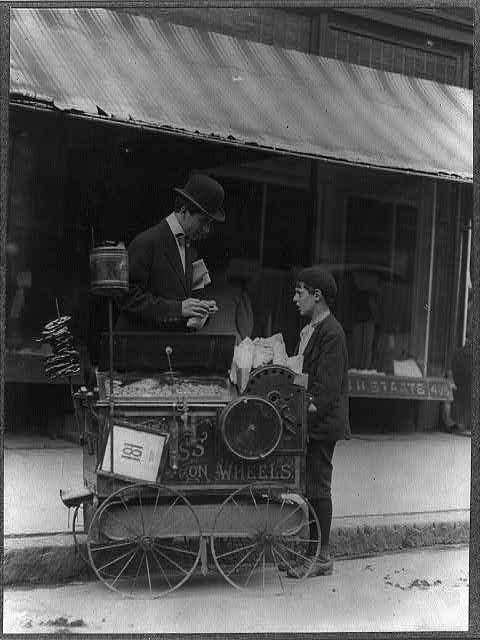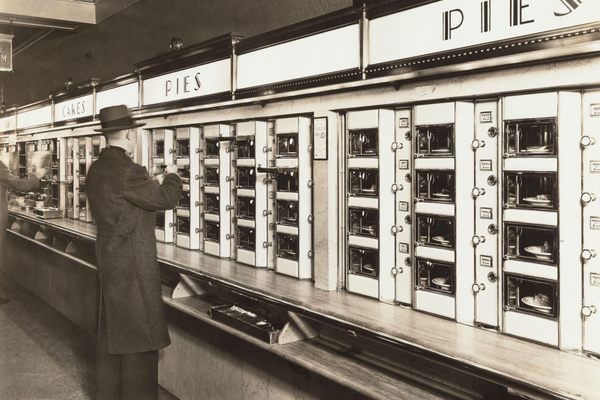Why Midcentury Lawyers Spent 12 Years Arguing About Peanut Butter
It all started when the FDA launched an “assault on inferior peanut butters.”
America loves peanut butter. The country spends something like $800 million a year on it. The average child in the U.S. gulps down 1,500 peanut butter and jelly sandwiches before graduating high school, if the National Peanut Board is to be believed. Senator Tom Harkin of Iowa once asked rhetorically, “what’s more sacred than peanut butter?”
In 2015, former Peanut Corporation of America CEO Stuart Parnell was sentenced to 28 years in prison for knowingly shipping salmonella-tainted peanut butter in 2009. According to the Justice Department, this was the “harshest criminal sentence ever in a food safety case.” But this isn’t the first time the peanut butter industry has been roasted for delivering a subpar product. As the 1950s were drawing to a close, the FDA launched an “assault on inferior peanut butters” against the Peanut Butter Manufacturers of America. The story behind the resulting “Peanut Butter Hearings” is actually much stickier.
In 1959, an FDA study revealed that several items that were labeled as “peanut butter” only contained 75% peanuts. Consumers were furious, and began calling the products “peanut-flavored face cream.” In prior decades, major manufacturers like JIF, Skippy, and Peter Pan had begun altering their recipes to cut costs. Hydrogenated oils were being used instead of more expensive peanut oil, and glycerin had become the favored sweetener. Something had to be done.

In a 1959 press release, the FDA proposed enacting a peanut butter standard of 95 percent peanuts and five percent “optional” ingredients. Peanut butter manufacturers fought back, saying that consumers preferred their peanut butter sweeter and more easily spreadable. Consumer Reports didn’t buy it. Thus began what both the FDA and peanut butter lawyers would forever refer to as the great 12-year “Peanut Butter Case.”
Back-and-forth haggling convinced the FDA to lower the standard to 90%, but the companies countered with 87%. The FDA refused to budge. Lawyers from both sides argued over the exact percentage, but also what “optional ingredients” had to be listed. As one FDA historian said in the book Creamy and Crunchy: An Informal History of Peanut Butter, “the peanut butter standard put many lawyers’ children through college.” In late 1964, five years after the original press release, the two sides finally agreed to meet for public hearings to determine how many peanuts actually had to be in peanut butter.
In November 1965, after two postponements, the “Peanut Butter Hearings” began in a government building in a room that, as the Washington Post noted, had peanut-colored paneling. On one side were the well-paid lawyers of the Peanut Butter Manufacturers Association, representing JIF, Skippy, Peter Pan and other peanut butter companies. On the other side was the understaffed and underfunded FDA, trying to preserve peanut butter standards. The FDA had a secret weapon, though—the uncompromising head of the Federation of Homemakers, Ruth Desmond.

Even in 1965, Ruth Desmond was already known as a fierce consumer activist. In 1959, she formed the Arlington, Virginia-based Federation of Homemakers in response to the cranberry crisis of 1959—in which cranberry sauce was contaminated with a weed killer known to be a cancer-causing agent. In the early 1960s, Desmond had gone after meat inspection regulations, nitrates in baby foods, and other consumer causes. In 1965, she approached the FDA to help with the peanut butter cause.
Desmond was fearless, persistent, and had a knack for sound bites, once telling a senior General Foods executive at a press conference that, “it amazes me how you gentlemen in the food industry are always concerned about having high-quality food yourself. But you want the rest of us to eat sawdust.”
Desmond attended every day of the hearings, which lasted 20 weeks and produced over 8,000 transcript pages. The press called her “Peanut Butter Grandma.” She would tell them that she couldn’t leave the house without first apologizing to her husband for not being able to make dinner that night. After all, being a consumer activist was a full-time job. “I cannot leave them alone, those lawyers,” she would recite as the punch line.

The hearings dragged on, with the manufacturers arguing that the increased percentage would cause a “stifling of innovation” and that it would cause prices to rise for the consumer. The FDA argued that, at some point, the product stopped being peanut butter. To them, it was at that 90 percent mark.
Ben Gutterman, who argued the FDA’s case at the hearings, would later say: “We weren’t saying that it was a bad product, only that it wasn’t what the consumer expected to find under the name. Does she expect to buy peanut butter, or a mixture of lard and peanuts, with maybe some turnip greens ground up in there besides? If that’s what the manufacturer wants, let him produce it, but under that name.”
The hearings concluded in March 1966, with the general consensus being that the FDA was right. Despite this, it took another five years until the US Appeals Court affirmed the 90 percent standard. Finally, on May 3, 1971, 12 years after it was first proposed, any peanut butter that was labeled as such had to have 90 percent peanuts. If it wasn’t, it could still be sold, but with the dreaded label of “peanut spread.” Desmond celebrated by shifting her focus to hot dogs.
 (Photo: robinmcnicoll/flickr)
(Photo: robinmcnicoll/flickr)
The “Peanut Butter Hearings” led to many changes. Neither side liked the idea that they were arguing over a mere three percentage points, or as the FDA’s own history states, “about the number of angels dancing on the head of a pin.”
The FDA moved away from regulating exactly what was being put into food (as long as it was “safe”) to pushing for better and more accurate labeling. Today, the food industry is given more freedom to put the ingredients it wants into products, as long as they are correctly labeled.
In the end, the entire case came down to one simple question: what exactly is peanut butter?
Gastro Obscura covers the world’s most wondrous food and drink.
Sign up for our regular newsletter.
This story originally ran in 2015; it has been updated for 2022.

























Follow us on Twitter to get the latest on the world's hidden wonders.
Like us on Facebook to get the latest on the world's hidden wonders.
Follow us on Twitter Like us on Facebook